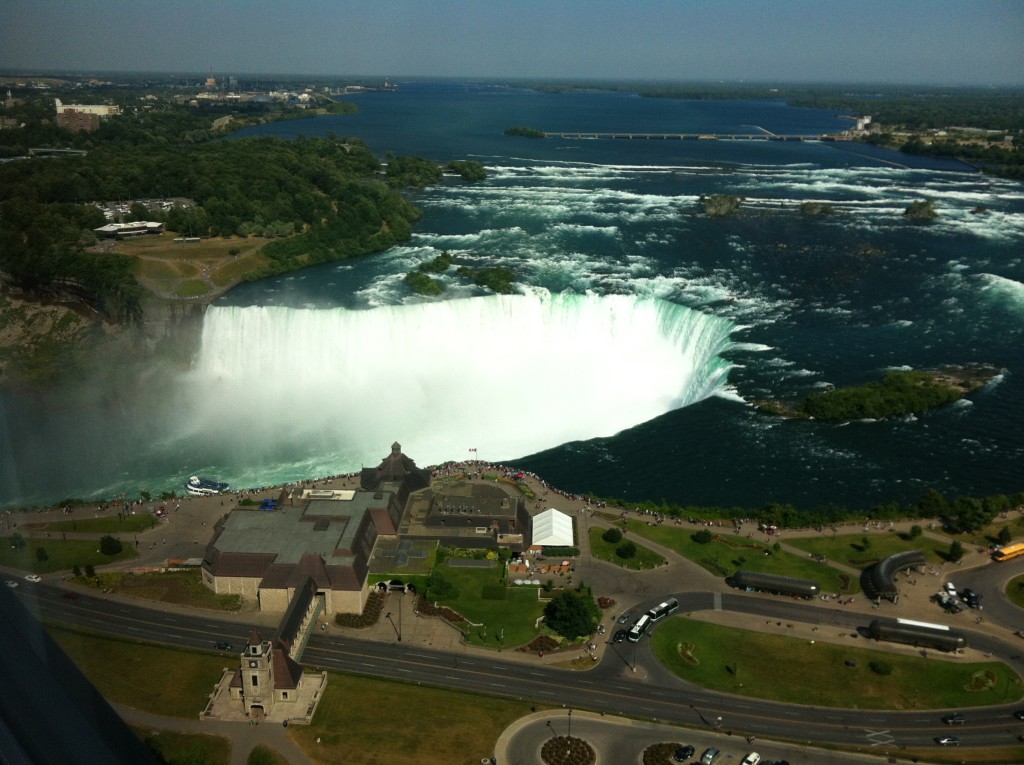Nikola Tesla designed a way to harness the power of nature at Niagara Falls. But in my e-book Abraham Lincoln and Nikola Tesla: Connected by Fate, I note that Abraham Lincoln had a scientific connection to Niagara Falls almost fifty years before Tesla. In 1848 Lincoln was taking a circuitous route home from a successful campaign tour of New England (where he stumped for Zachary Taylor). His tour took him to Niagara Falls. Like everyone else who sees the Falls for the first time, Lincoln was duly impressed. Unlike most people, however, his naturally analytical mind seemed more impressed with the geology, math, and hydrodynamics of the falls rather than its beauty.

I’ve taken an even closer look at Lincoln’s calculations of the power of Niagara in an article just published in The Lincolnian. The article is titled “Abraham Lincoln – The Majesty and the Math of Niagara Falls” and is in the Third Quarter 2015 issue. [Members of the Lincoln Group of the District of Columbia get The Lincolnian as part of their membership.]
Here’s a snippet. After Lincoln’s law partner William Herndon sees Niagara Falls on a trip several years after Lincoln’s visit, he comes back to describe the awe-inspiring magnificence of the Falls and…
Nearly exhausted with this description, Herndon then asked Lincoln of his opinion of Niagara Falls. “What made the deepest impression on you when you stood in the presence of the great natural wonder?” he queried Lincoln, expecting something equally imagery-indulgent.
“The thing that struck me most forcibly when I saw the Falls,” Lincoln said, “was, where in the world did all that water come from?”
Dumbfounded, the humorless Herndon could not believe his ears. The beauty! The splendor! Had the man not opened his eyes to the sight before him? Had he not opened his ears to the thundering roar of the water splashing into the mist below?
Herndon’s explanation of Lincoln’s answer was that “it in a very characteristic way illustrates how he looked at everything.”
And he was right. Lincoln had an analytical and inquisitive mind. His interest in science and technology is the topic of my forthcoming book and the presentation I will give at the Lincoln Group of DC lecture event on October 20, 2015. If you’re in the area, sign up now.
David J. Kent is the author of Lincoln: The Man Who Saved America, in Barnes and Noble stores now. His previous books include Tesla: The Wizard of Electricity (2013) and Edison: The Inventor of the Modern World (2016) and two e-books: Nikola Tesla: Renewable Energy Ahead of Its Time and Abraham Lincoln and Nikola Tesla: Connected by Fate.
Check out my Goodreads author page. While you’re at it, “Like” my Facebook author page for more updates!











Pingback: The Year in a Writer’s Life – 2015 | Science Traveler
Pingback: Can’t Stand Me – That Time on the Video | Hot White Snow
Pingback: Unbearable – That Time on the Video | Hot White Snow
What a very interesting post. I was not familiar with this story about Lincoln, and found it amusing. I suppose it is a valid question, ‘“The thing that struck me most forcibly when I saw the Falls,” Lincoln said, “was, where in the world did all that water come from?”’ However, it is the farthest thing from most people’s minds in terms of beauty and wonder. Great character representation. Great post!
Thanks. The odd thing is that when I first saw Niagara Falls I had exactly the same thought. 🙂
As did I, David. I also wondered how many cubic yards of water went over the Horseshoe. Of course, those questions are answered in the most basic of information booklets you can get there, but I bought those on my way OUT. But they weren’t answered at all in Lincoln’s time.
You’ve written a most informative piece here, and a most entertaining one.
Chuck Larlham
Thanks, Chuck. I wrote even more in the actual article in the Lincoln Group newsletter I reference. I’ll email you a PDF of the newsletter. My article starts on p10.
Pingback: The Year in a Writer’s Life – 2016 | Science Traveler